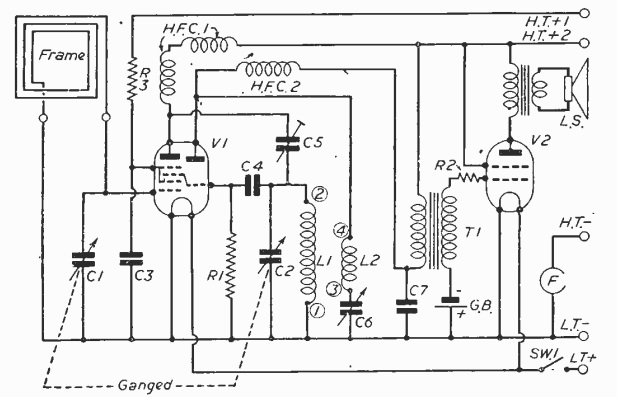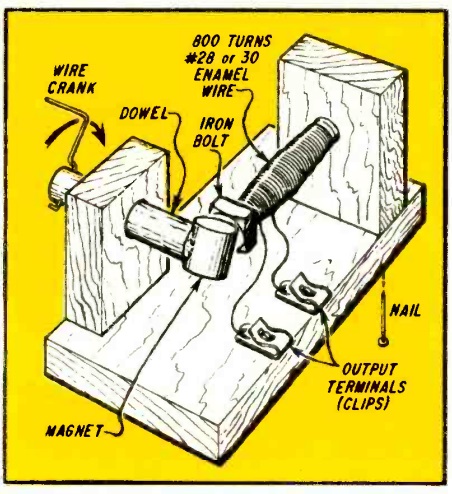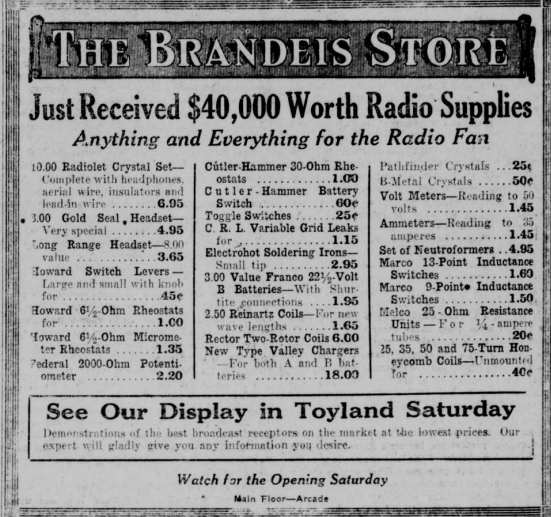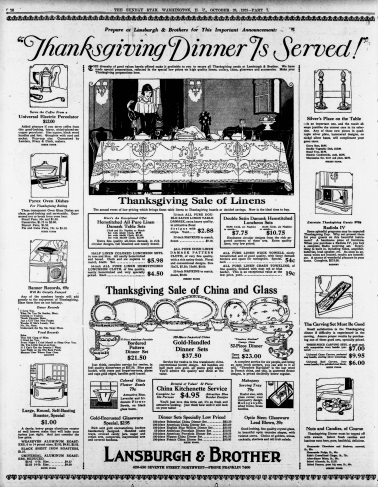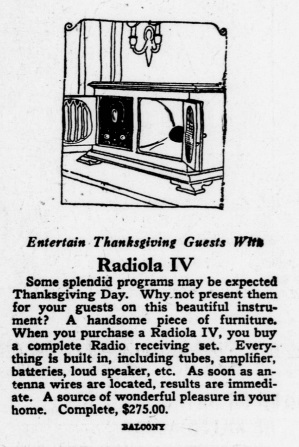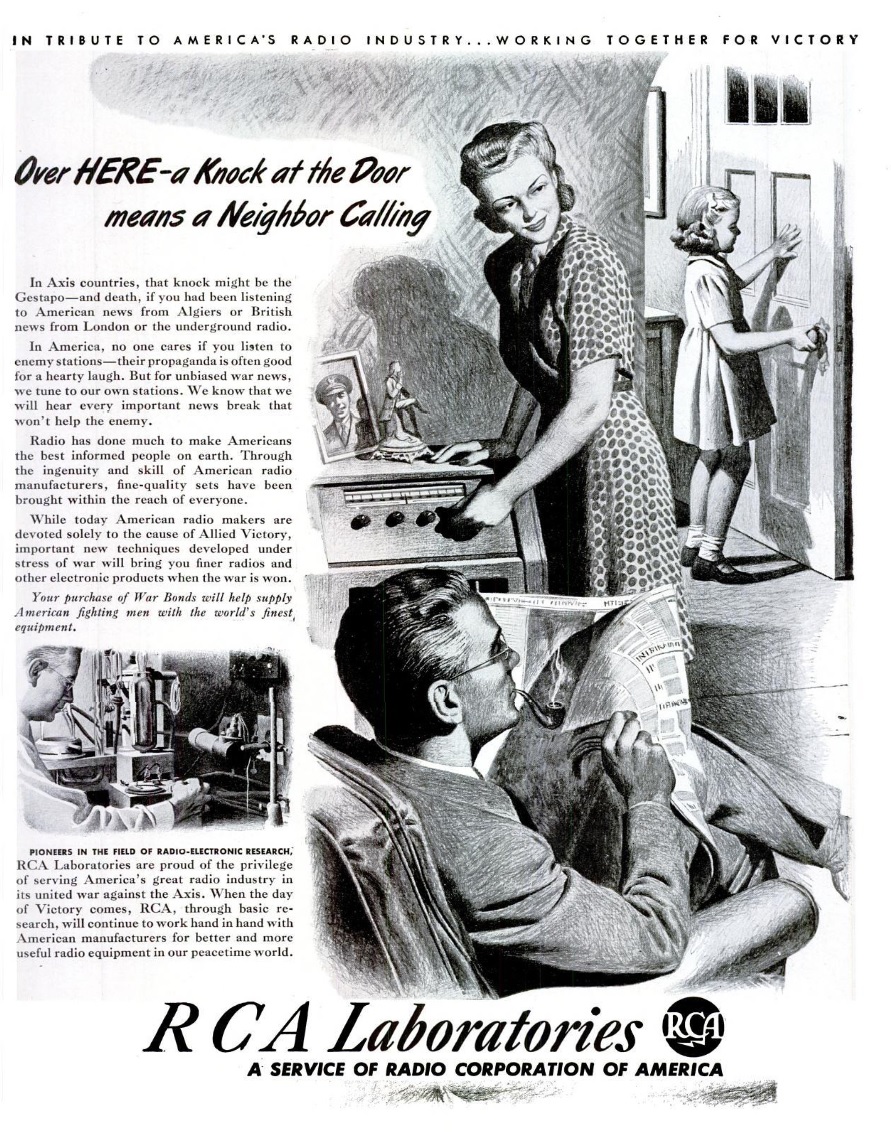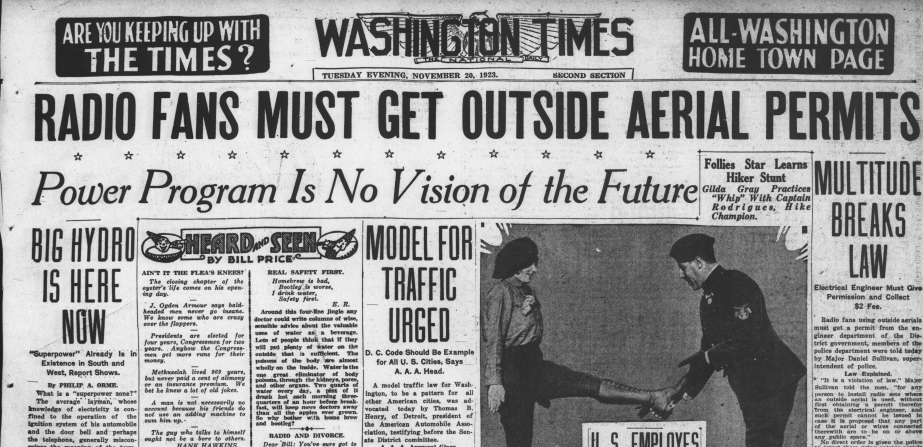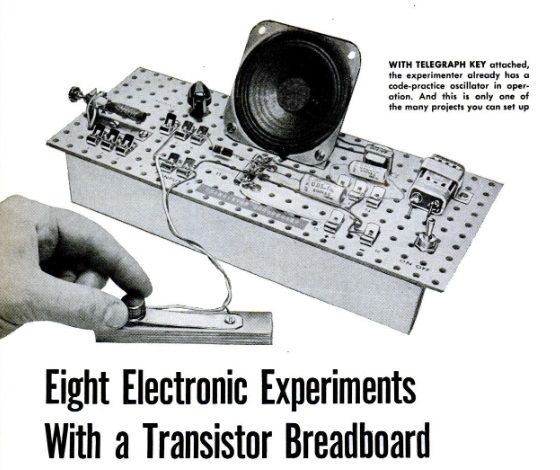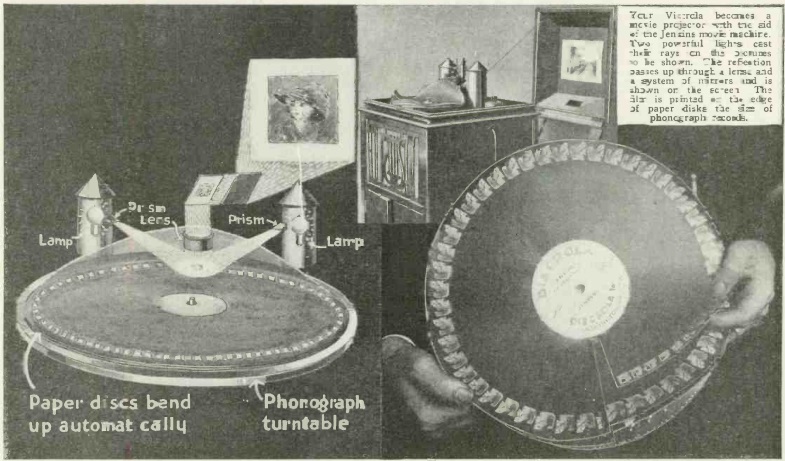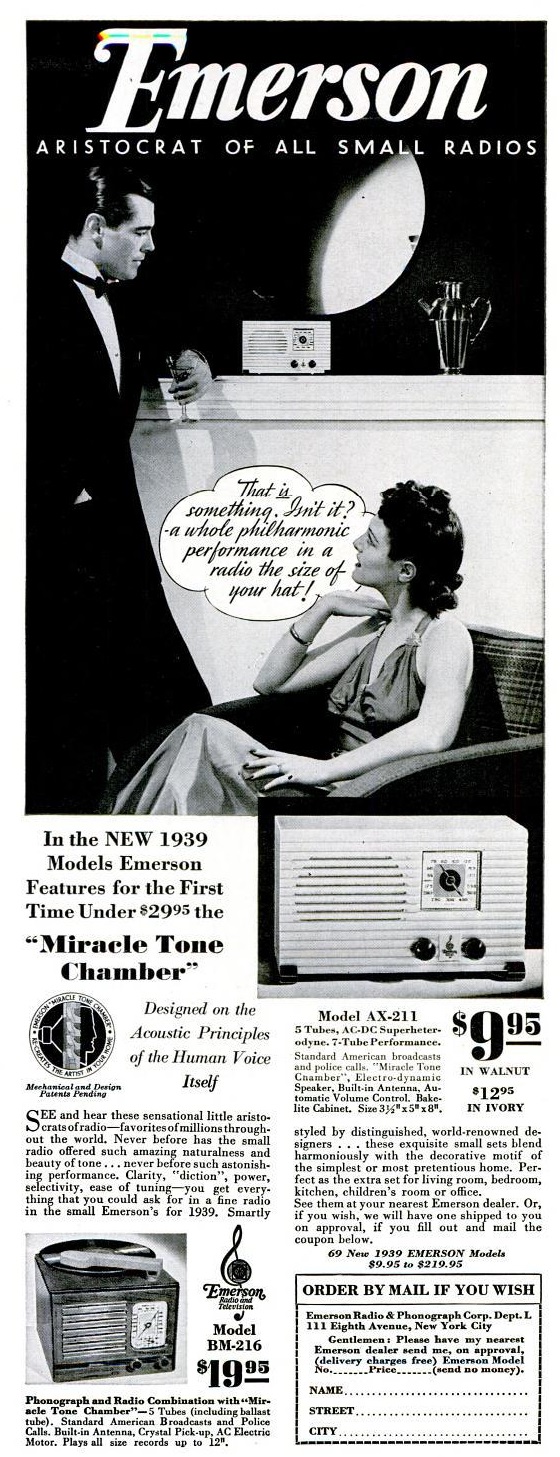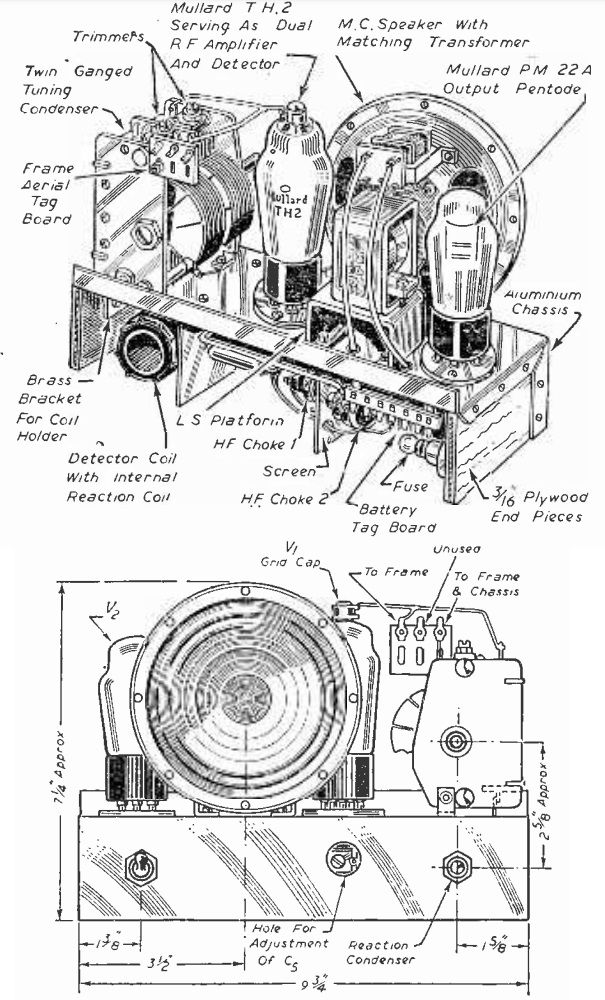 The plans for this two-tube British bedside portable appeared 75 years ago this month in the November 1948 issue of Practical Wireless. The set was designed to pull in the BBC Light and Home Service programs with loudspeaker volume, using commonly available components. It ran on battery power, and used two tubes. Because a small frame antenna would be used, the author realized that at least one stage of RF amplification would be necessary. Therefore, the first tube was a dual tube, servicing as RF amplifier and detector. Another tube served as AF amplifier to drive the speaker.
The plans for this two-tube British bedside portable appeared 75 years ago this month in the November 1948 issue of Practical Wireless. The set was designed to pull in the BBC Light and Home Service programs with loudspeaker volume, using commonly available components. It ran on battery power, and used two tubes. Because a small frame antenna would be used, the author realized that at least one stage of RF amplification would be necessary. Therefore, the first tube was a dual tube, servicing as RF amplifier and detector. Another tube served as AF amplifier to drive the speaker.

